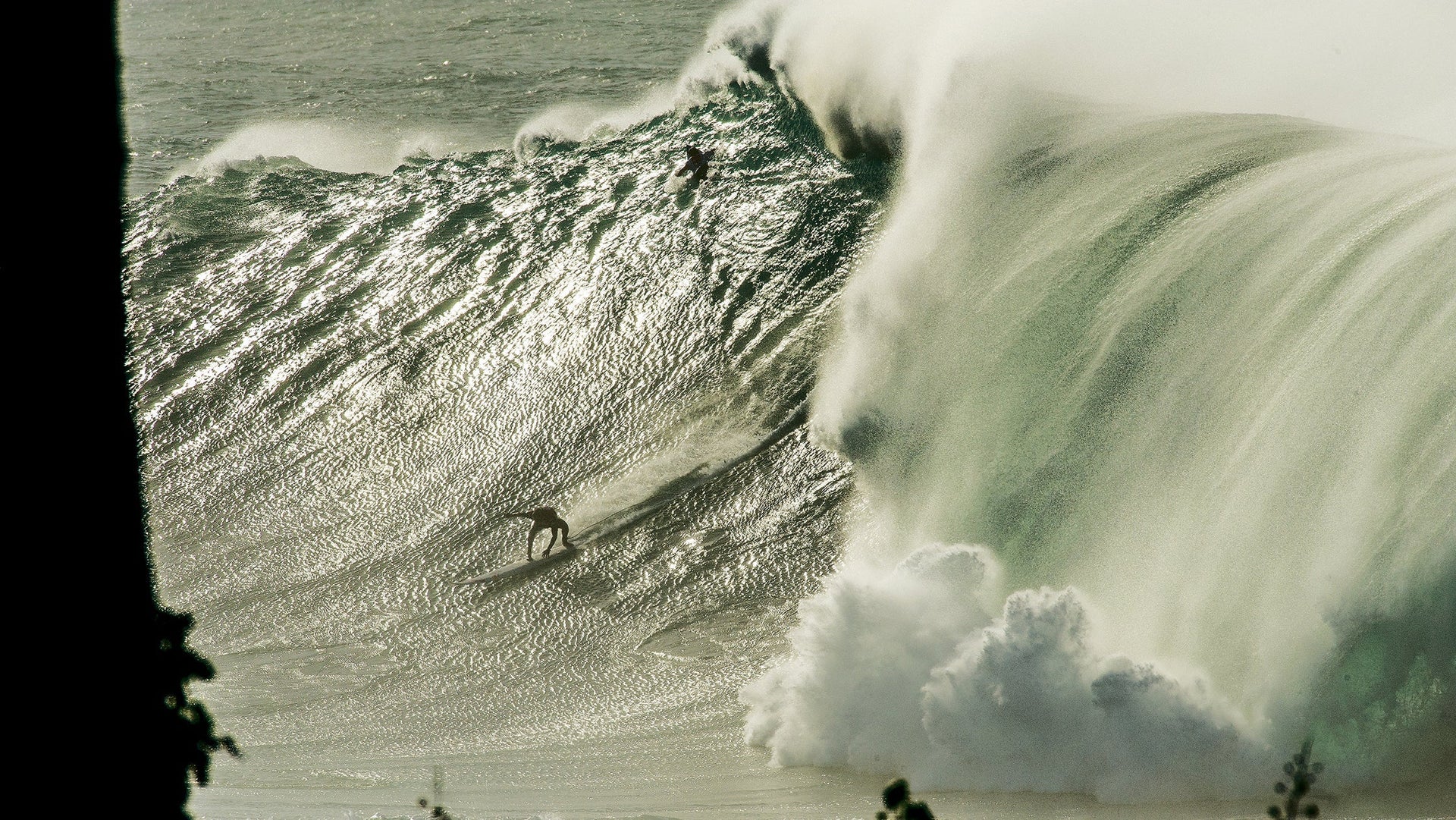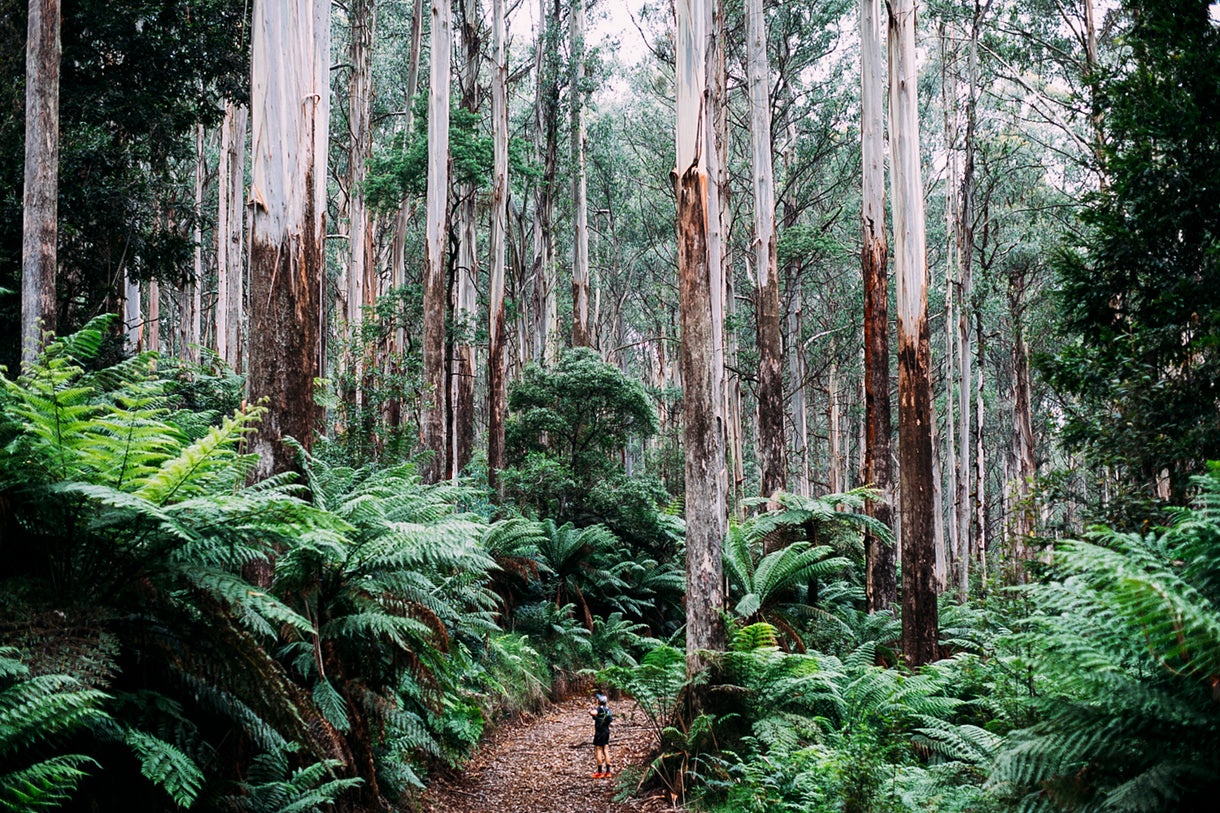Clyde Aikau on why the most culturally significant big-wave event in surfing will always matter.
As they say, “the bay calls the day,” and when the Eddie’s on, a layer of salty mist cloaks the Seven Mile Miracle, cars come to a standstill on Kamehameha Highway, work stops, school stops, everyone on Hawai‘i tunes in; everyone cares.
Clyde Aikau is on the other line; he’s 71 years old and bubbles with stoke and enthusiasm. I barely mutter “hello” before he stops me to break straight into the story of the last In Memory of Eddie Aikau Invitational, the most prestigious big-wave surfing event held in honor of his brother, the late Eddie Aikau: Hawai‘i’s big-wave surfing hero and the first lifeguard on O‘ahu’s infamous North Shore.
“I gotta start this conversation off by saying that you guys [at Patagonia] saved my life, brah,” he begins. “2016 was going to be my last ride at the Eddie, and it almost was the last ride of my life. I was 66 years old. I was up against John John [Florence, the 2016 Eddie Aikau Invitational Champion and two-time World Champion]. It was the old dog versus the young bull. We were there to rock and roll. I said to myself, ‘No matter what happens, I’m going to go on the first big wave that comes.’
“It did and I took off, fully charging 101 percent—when I dropped in, my fin came out of the water. I brought it back down, then it came back out again, and I went head over heels.” The wave tossed him with so much force that it tore his rotator cuff; undeterred, Aikau paddled back out for more.
 Clyde Aikau’s heroic drop that would result in a blown-out shoulder. Photo: Matt Catalano.
Clyde Aikau’s heroic drop that would result in a blown-out shoulder. Photo: Matt Catalano.
Held at Waimea Bay on the North Shore of O‘ahu, the Eddie is different from most surf competitions, in that it only “goes” when the waves at Waimea are 20-foot Hawaiian (or, in non-Hawaiian-surfer units, 40 feet tall on the wave’s face). Because of this, the event has run just nine times since its inception in 1984 (the Eddie was first held at Sunset Beach before moving to Waimea Bay in 1986). The morning of the 2016 Eddie, however, there was speculation the surf might actually be too big to hold the event.
“Then the [biggest] set of the day comes in,” Aikau continues. “It was a monster. We all knew we were about to get licked! The wave stacked up. It looked like an 80-footer! It took me all the way down to the bottom of the ocean. I pulled my vest and fought my way up. The next thing I knew, I was literally floating. I opened my eyes; everything I saw was white. I felt like I was in a church. I’m gone, and everyone was trying to find Uncle Clyde. When I woke up, the lifeguards and safety team had me. I want to thank you guys [Patagonia] and Kohl Christensen, who got me certified and gave me a [Patagonia PSI] vest. Without it, Uncle Clyde would not be here.”
To understand the cultural capital of the Eddie, it’s important to understand who Eddie Aikau is to Hawai‘i. Eddie pioneered surfing Waimea Bay—the North Shore’s premier big-wave spot—on its biggest days in the ’60s and ’70s. He was not only Waimea Bay’s first lifeguard but the first lifeguard on the entire North Shore. His involvement with the Hōkūleʻa and the heroics of his death are “what’s carved his legacy and values into the solid Koa wood of the Hawaiian people,” according to his brother.
“In ’76, the Hōkūleʻa was a revitalisation of Hawaiian culture and tradition,” says Aikau. “Eddie wanted to be a part of it and joined in ’78 because being part of the Hōkūleʻa was part of the honor of being Hawaiian. Back then, Hawaiians weren’t looked at as admirable; we were looked at as uneducated drunks who played the ukulele. And being proud to be Hawaiian and getting back to Hawaiian tradition was what the Hōkūleʻa movement was about.”
On March 17, 1978, the Hōkūleʻa, a double-hulled canoe, embarked on its maiden 2,500-mile cross-Pacific journey and capsized just 12 miles off the coast of Molokai. With the canoe quickly sinking, Aikau grabbed a paddleboard and began stroking toward shore in an attempt to save the lives of his shipmates. He disappeared at sea that day, but the phrase “Eddie Would Go” has become synonymous with his life—representing not only the selfless act that led to his death, but his temperament as a lifeguard, a big-wave surfer, a friend and a family member. “Eddie is huge all over the world,” continues Clyde, “in Japan, Europe, California, Brazil, Tahiti, Fiji and all the Polynesian islands. He is so revered by the Hawaiian people; everybody reads their children the stories about Eddie.”
The event itself is rooted in North Shore tradition; it’s emblematic of the hard-charging, death-defying culture that’s made this stretch of coast the proving ground for surfers worldwide. Due to the event’s significance to the Hawaiian people and the surfing community, and the rare conditions it takes for the Eddie to “go,” it’s less a contest than a rite of passage for big-wave surfers. Former champions include Clyde Aikau, Kelly Slater, Greg Long, John Florence and Bruce Irons.
Even getting to the invitational is unconventional; the waiting period technically starts December 1, but competitors won’t know the specific date until a few days before, when they get a “yellow” alert summoning them to the North Shore from around the world—often, with only a 72-hour window to get there. Even then, “The bay calls the day” and the event can be called off almost as soon as they arrive.
 Clyde Aikau leads the paddle-out during the Eddie Aikau Opening Ceremony. Waimea Bay, O‘ahu. Photo: Matt Catalano.
Clyde Aikau leads the paddle-out during the Eddie Aikau Opening Ceremony. Waimea Bay, O‘ahu. Photo: Matt Catalano.
This year, however, the Aikau family canceled the event early due to COVID, marking the second time in its history that Waimea Bay did not host the annual Eddie Aikau Opening Ceremony, which takes place before the waiting period. The first time was in 2017, when the Aikaus and Quiksilver, the event’s marquee sponsor, had a falling-out, leaving the Eddie with an eerie air of uncertainty.
According to Uncle Clyde, Quiksilver had profited from the Eddie Aikau name for too long, and it was time to part ways. “We had an okay relationship with [Quiksilver], but in the end, we disagreed with what they wanted to do because we felt it infringed on our Hawaiian values, Eddie’s legacy and what he was all about. It was money, it was merchandise, and they paid the family a few bucks over the years, but it wasn’t even close to what they were paying their medium-level surfers. I was still trying to broker a deal with them [in 2017], but they pulled the plug and that was it. Life goes on.”
Quiksilver ran the event for 31 years. The company has been public about the split, stating that “after long, hard negotiations with the Aikaus, there just wasn’t enough time to put on a proper contest. Even though the parties were unable to reach an agreement, Quiksilver remains open to continuing discussions for a 2018-19 event and beyond.”
When Quiksilver was granted the 2018-19 permit for the event—in as graceful an exit as possible—they handed it over to the Aikaus. While event permits issued by the City of Honolulu are traditionally nontransferable, they made an exception for the family. No one in surfing wants to see the Eddie disappear.
“Quiksilver has been honored to celebrate the life of champion big-wave surfer and Waimea Bay lifeguard Eddie Aikau,” the company said in a statement. “[We are] proud of the tradition of the event which underlines its respect for Eddie Aikau, the Hawaiian people and the community at large, and Quiksilver greatly appreciates more than 30 years of partnership with the Aikau family.”
 The world’s best big-wave surfers gather on a swell-less, glassy day to honor the life of Edward Ryon Makuahanai Aikau. Waimea Bay, O‘ahu. Photo: Matt Catalano.
The world’s best big-wave surfers gather on a swell-less, glassy day to honor the life of Edward Ryon Makuahanai Aikau. Waimea Bay, O‘ahu. Photo: Matt Catalano.
With their main sponsor gone, the Aikaus announced they were looking for supporters to keep the Eddie going, under a new name: the Eddie Aikau Big Wave Invitational. Today, more than 15 Hawaiian-based brands—including Hawaiian Airlines, Kona Brewing Company, Waimea Valley, Turtle Bay Resort, L&L Hawai‘i—are funding the event.
“It’s not gonna be a $75K first-prize event, but the cultural connection and tradition continues at 101 percent. We brought the Eddie back to its Hawaiian roots, the Hawaiian culture of chanting, involving the Hawaiian language and children in the whole event. Eddie’s legacy is everything to us and we took it back for the entire nation of Hawai‘i. We have the support of Hawai‘i; we’re moving forward—and we know that all the riders, they’d ride for free, brah. Nobody would miss the Eddie for anything.”
For the first time in the event’s history, the 2019-20 invite list included nine female surfers among the ranks of the best big-wave surfers in the world. However, like most years, a swell of Eddie stature failed to materialise, and—in light of this year’s COVID cancellation—I ask Clyde if there was ever any chance, in his mind, that the Eddie wouldn’t return. He laughs, and repeats his old trope:
“No way, brah! Let me tell you something: If I have to give out coconuts for trophies and bring down 100 cans of sardines and rice, like me and Eddie used to do because we were poor, to feed everyone at the contest, tell me the big-wave riders wouldn’t be there? The whole thing is larger than life. On the day of the event, the mana and the spirit of the valley comes alive. When you and I are dead and gone, Eddie’s legacy will continue.
“Ooh, it’s giving me chicken skin, brah!”
Banner image – Ramón Navarro holds on as Waimea tries to send him in for a plate lunch. The Eddie, 2009. North Shore, Oahu. Photo: Scott Soens.
____________________________________________________________________
Author Profile

























































